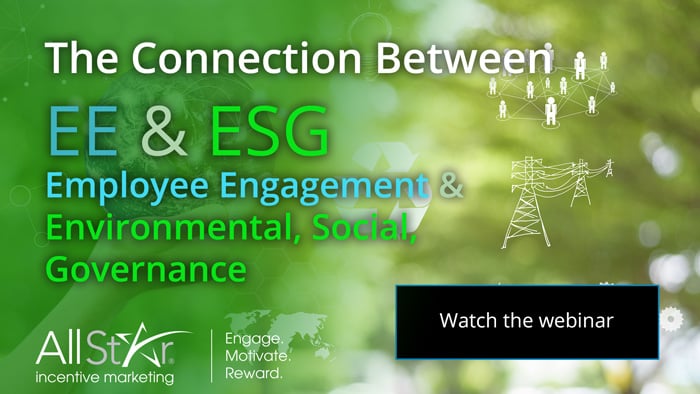
ESG refers to business leader’s focus on Environmental, Social and Corporate Governance in relation to their long-term plans. What can a focus on ESG mean to your business or profitability, and how can companies use employee engagement tactics to further the cause?
In 2017, over 140 CEOs from the World Economic Forum International Business Council (IBC) issued a “Compact for Responsive and Responsible Leadership”. The CEOs developed a framework that companies can use to track and demonstrate long-term sustainability. This compact aligns corporate goals to the long-term goals of society and identified “Sustainable Development Goals” (SDGs) as the roadmap for that alignment.
Our February and March blog posts provide an overview of the 4 pillars of ESG, and what they can mean for your business.
The 4 pillars of ESG that are covered in this 4-part series are:
Governance
Planet
People
Prosperity
Part 4: Prosperity
The UN’s 2030 Agenda for Sustainable Development identifies prosperity as an area of critical importance: “We are determined to ensure that all human beings can enjoy prosperous and fulfilling lives and that economic, social and technological progress occurs in harmony with nature”.
The core features of prosperity include 1) no poverty, 2) decent work and economic opportunity, 3) industry, innovation and infrastructure and 4) reduced inequality. Prosperity is necessarily linked to people and planet: ensuring that the workforce is engaged and that the company they work for shares their values. When key talent is recognized and rewarded, they feel valued and remain with the company.
The prosperity pillar also helps to connect the dots between ESG (Environmental, Social and Corporate Governance) and Employee Engagement. Three paths to higher employee engagement include: 1) The rise of the socially conscious consumer (they’ll switch brands and pay more for products and services produced by companies that share their values), 2) Activist employees (they expect the company they work for to share their values and “walk the talk”) and 3) Investors (understanding that purpose-driven companies are growing at twice the rate of others.)
Where to start?
It doesn’t have to be overwhelming. Chances are that most companies are already doing something right. Whether you have a robust and effective brand, training program, diversity and inclusion strategy, employee wellness program or sales incentive program, you’ll likely be able to build upon that initial platform. For example, if your company has an effective sales incentive program, incorporating an existing (or creating a new) wellness program into the mix may be a logical next step. As you slowly build, including training, innovation and other initiatives will result in an enterprise-wide culture of recognition. Partnering with an experienced firm that can assess where you are now and advise you as to the best way to grow is a good starting point.
Through ESG, both stakeholders and shareholders benefit as they recognize that the company isn’t just doing good because it’s the right thing to do; it’s also profitable.
For more info on how ESG impacts employee engagement, view our latest webinar:



